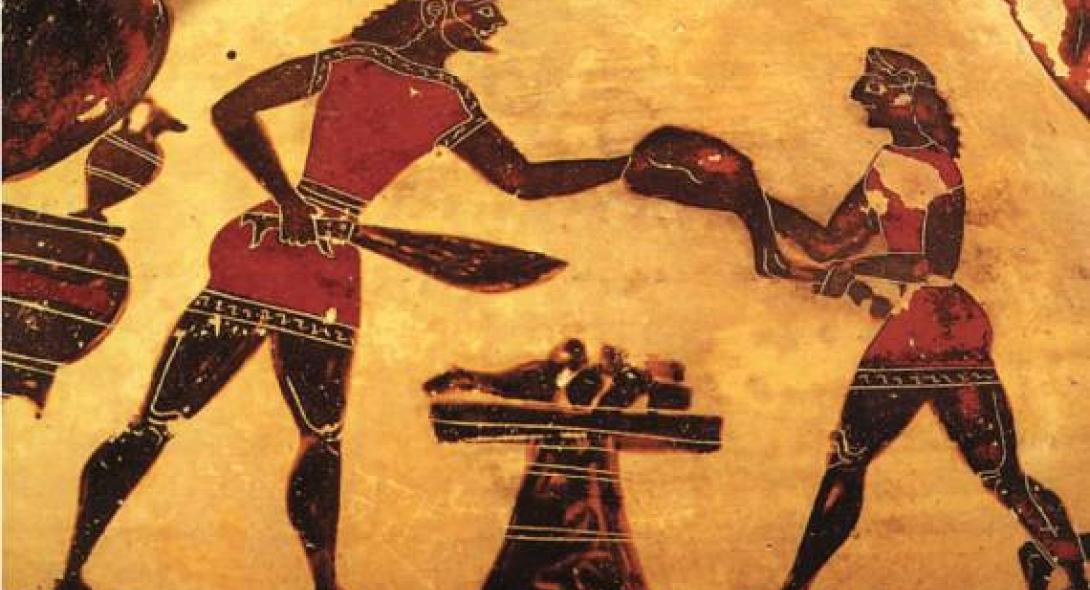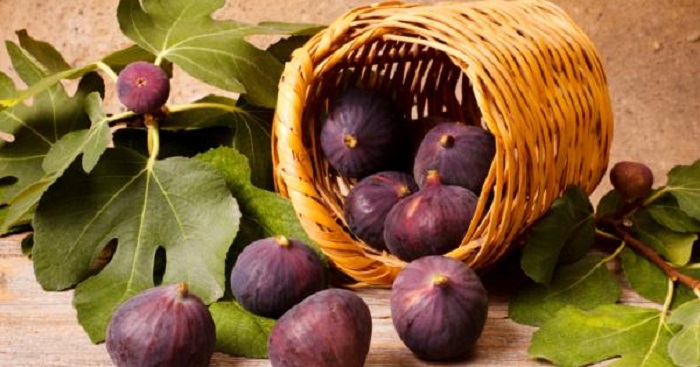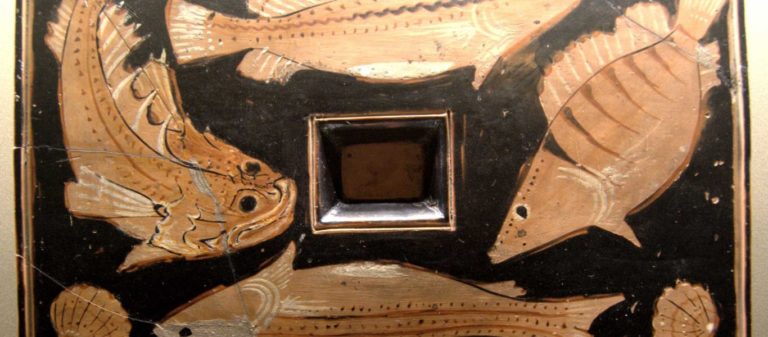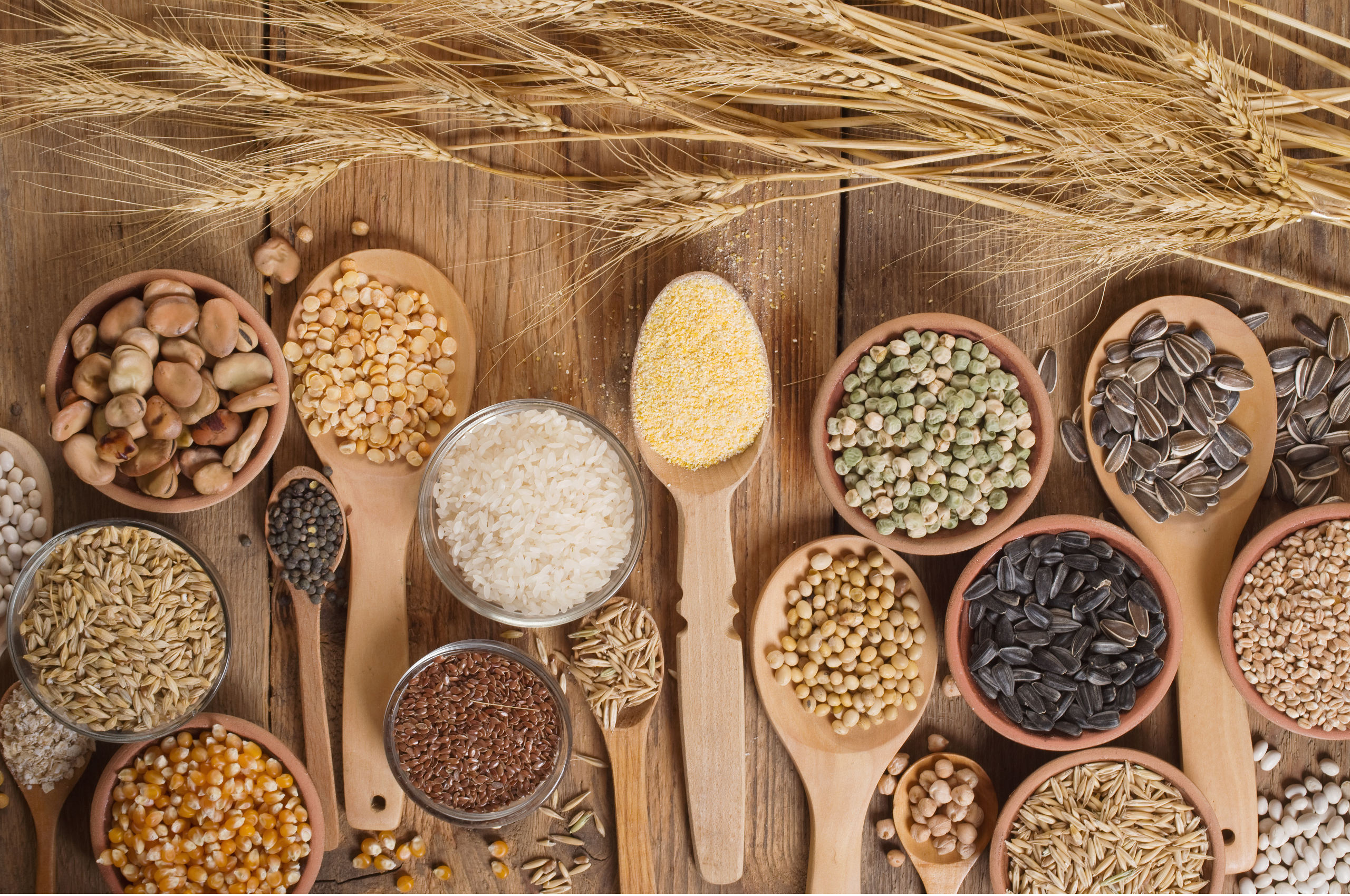DepthReading
The Incredibly Diverse – And Healthy – Diet of the Ancient Greeks
The eating habits of the ancient Greeks are fascinating for so many reasons. They had an impressively varied diet by any measure, but it naturally contrasted in many ways to ours — with the most characteristic difference being that they ate much less than we do today.
In ancient Greece, people would begin their day with a very lean breakfast, which included a little barley bread, dipped in lukewarm wine, and figs. Another common breakfast food was actually a drink, called “Kykeonas,” a libation made of boiled barley, flavored with mint or thyme, which was believed to have healing properties.
Greeks of that time were very fond of fish, perhaps even more than we are today. For lunch, they would routinely dine on any fresh fish that was available, including sea bream, mullet, sardines and eels. For vegetables, there was an assortment of legumes from which to choose, including lentils, beans, chickpeas, peas and broad beans.
The eternal European staple of bread was always part of the midday meal, accompanied by cheese, olives, eggs, nuts and fruits.
Ancient Greeks considered dinner to be the most important and enjoyable meal of the day. Although health specialists today recommend that we should eat particularly lightly in the evening, ancient Greeks actually spent a lot of time together at the table at the end of the day, and ate fairly heavily at that meal.
Dinner in ancient Greece was usually accompanied by desserts, the so-called “tragimata,” which could be composed of fresh or dried fruit, including figs, as well as nuts and grapes or honey-based sweets.
Regarding their meats, the ancients showed a particular preference for pork and veal, while they rarely ate goat or lamb. They also loved hunting, especially small birds such as thrush and quail, but they were not averse to taking deer as well, so venison was not unheard of at the ancient Greek table.
Perhaps most surprisingly, the Greeks also loved their snails; it is recorded that Cretans had eaten them since the time of Minos.
Fruits and vegetables were always present on the table, although not in the variety that we find today. Pears, pomegranates, apples, figs, berries, cherries and plums were always in high demand.
Athenians were known to cultivate vegetables in their gardens, and they had a particular love for onions, garlic, lettuce, cucumbers, peas, artichokes, celery, dill and mint. Mushroom, fennel, asparagus, and even tender, edible nettles, were to be found in abundance in the fields.
As almost all of us still do, ancient Greeks also loved their bread, and they would bake many different varieties of it, from flat breads to semolina bread, and even a coarse type of bread made from millet.
Most of all, perhaps, the ancient Greeks loved their fish. They frequently dined on the types of fish which lived right along the rocky shores of the Aegean, but they also enjoyed fish from the open seas, such as tuna, a much-sought-after delicacy.
They also enjoyed mackerel, bonito and anchovies, which were abundant during their season and were easy to catch with nets.
Tuna and anchovies, which were widely consumed by all social classes, were the product of a flourishing sea trade throughout the Mediterranean and the adjacent seas.
“Garos,” a type of sauce made from a fried, salted fatty fish, was another basic element of the diet along the coast in ancient Greece. High quality garos, made of tuna offal and blood, was actually quite expensive.
The kitchen shelves of an ancient Greek house were always stocked with an impressive variety of herbs and spices, including oregano, basil, mint, thyme, cardamom, coriander, capers and sesame, which they would add liberally to their dishes.
Most foods were particularly light, as they were baked in the oven and on a skewer, and the same was true for sweets, which were made from pastry, with dried or fresh fruit, and honey.
Every meal was accompanied by wine, of course, and olive oil was always on the table, especially for Athenians, as they considered it to be the goddess Athena’s gift to their city.
They believed that the purpose of food was to satisfy the palate and not to actually fill the stomach. In that sense, and that sense only, one can even say that they were gourmands.
The only exception to this overall rule were the people of Sparta, who were by far the lightest eaters of all. True to form, even in their diet, they followed a laconic austerity, with their daily food consisting of a bowl of “black broth” and a piece of bread, while on special occasions and feasts, they would have boiled pork, accompanied by a little wine and some pita bread.
But everywhere else in Greece, there was a great variety of food at each and every meal, and people took an obvious delight in it.
However, despite this mouth-watering array of delicacies, which no one today would scorn, ancient Greeks were still light eaters compared to us today in the modern world. They indeed consumed a great variety of foods, but in relatively small quantities.
So this proves that, even when it comes to food, we still have a lot to learn from the ancient Greeks.
Category: English
DepthReading
Key words:




